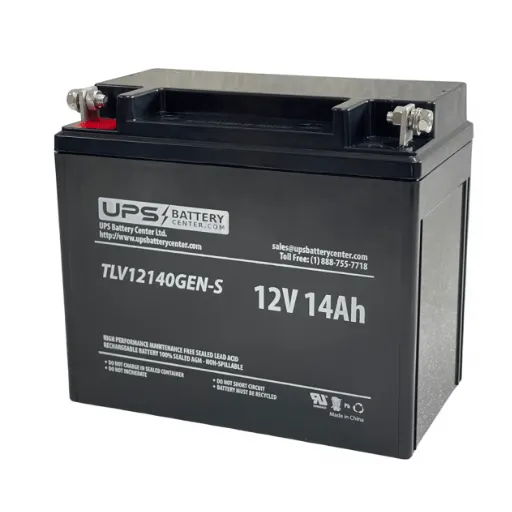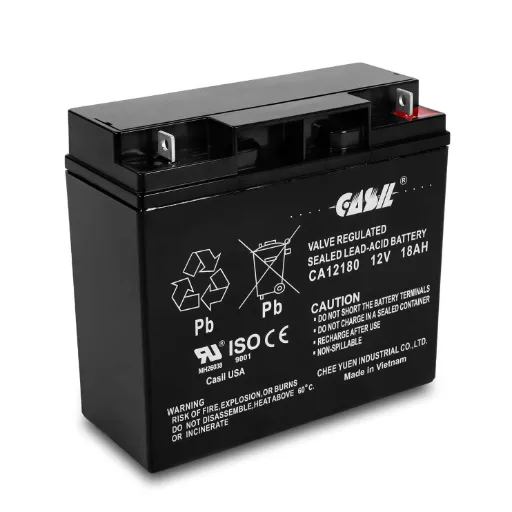Generac covers for outdoor generators are essentially large weatherproof tarps intended to protect generators against rain, snow, and harmful sunshine. In this article, the significant role played by the generator cover in reducing the lifespan of your generator is questioned. The generator cover prevents expensive repair work and keeps the machine operating at maximum efficiency. When preparing for emergency outages or extended storage, knowing the correct procedure for shielding your generator is the first step in ensuring it is ready when you really need it. Continue reading to discover why a Generac generator cover is considered a top priority on the generator care checklist.
Importance of a Generator Cover
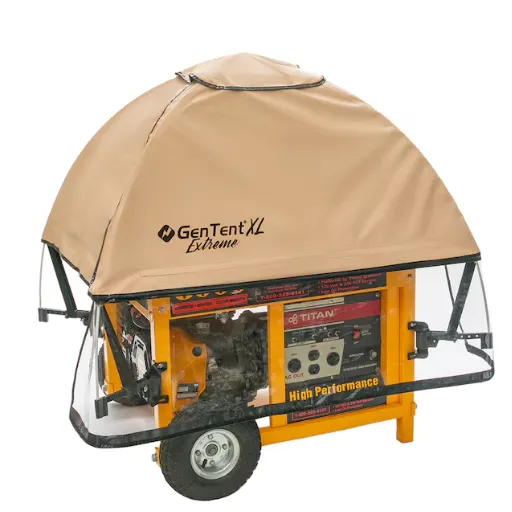
A generator cover is necessary to ensure the generator’s workings last throughout the machine’s lifespan. Rain, snow, and debris can all cause rusting, corrosion, or blockages in vital spots. Dirt can also lead to the inside working getting jammed in dust and making it inoperative. By doing so, a generator cover will prolong its working life, save on repairs, and allow the generator to operate whenever power is genuinely needed. It is a simple yet effective step in the maintenance concept.
Protection from Environmental Elements
Basically, Generators are very liable to long-term exposure to natural fading light, moisture, and even extreme temperature fluctuations. UV rays over an extended period can degrade plastic or rubber parts, resulting in cracking, hardness, and loss of functionality. Likewise, excess moisture levels in the air or continuous dew in the morning may facilitate the oxidation of metal surfaces and internal components, thereby increasing the risk of failures arising from corrosion. Extreme temperatures also impact the ability of seals, lubricants, and delicate electronic components to function, thereby either undermining operational efficiency or exacerbating premature wear. Such risks could be mitigated by purchasing a high-quality cover that is constructed from durable material and covers all weather conditions. Modern covers not only prevent physical damage but also balance the internal atmosphere, guarding against thermal shock to the generator and enabling it to operate at its best, regardless of the climate.
Preventing Costly Damage
The most effective method to prevent expensive damage will require an understanding of the equipment’s weak points and developing specific protective measures. For example, it is stated that some data support a decrease of about 40% in the life of machinery when subjected to improper storage or extreme environmental conditions. The priority should be protecting the equipment by using an enclosure fitted with a thermal management system to maintain stable operating temperatures, ensuring the equipment is never subjected to conditions that would cause it to boil or freeze. Additionally, sealing arrangements that guard against dust and moisture, which can be corrosive agents, will be required when working in industrial or outdoor environments. Inspections and maintenance are crucial, and it is beneficial to combine them with predictive analytics to identify patterns of wear and potential breakdowns before they lead to significant damage. Going through these steps will safeguard the long-term operations while minimizing revenue losses occasioned by sudden repair bills.
Ensuring Optimal Performance
To ensure maximum performance of the modern system, advanced monitoring techniques play that role. The implementation of sensor networks and IoT (Internet of Things) technologies enables the collection of vast amounts of real-time data on specific parameters of relevance, including temperature, pressure, or vibration. This data is flagged and undergoes analysis using advanced algorithms and machine learning models to identify any anomalies or degradation in actual performance. Based on predictive modeling, we then identify prospective failures before operators can actually realize there is a problem to be addressed. Furthermore, the integration of cloud-based solutions further promotes accessibility and encyclopedic effectiveness for performance metric attribution shared among various environments. In a nutshell, these steps collectively contribute to reliability at the system level and efficiency at the operational level, while ensuring reduced downtime.
Types of Generator Covers
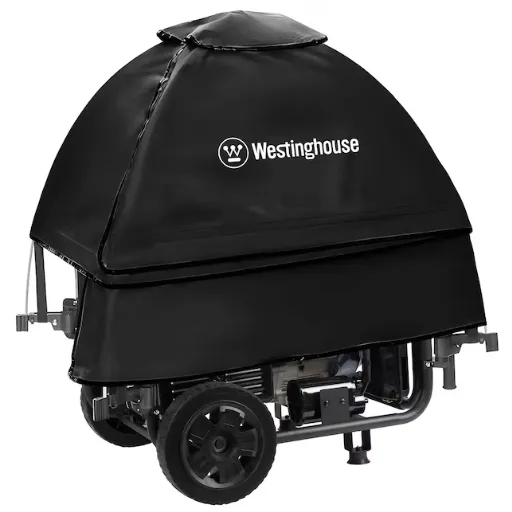
Standard Weatherproof Covers
Designed to protect your generator against the elements, these covers protect from rain, wind, snow, and direct sunlight. Nowadays, covers are fabricated from durable and water-resistant materials, typically polyester or vinyl.
Portable Generator Covers
Designed primarily for portable generators, the covers protect the generators both when in use and during storage. Many of them have vented areas to help prevent overheating during use.
Steel or Aluminum Enclosures
Generally employed in industrial applications or stationary setups, these enclosures provide robust protection against severe weather conditions, noise reduction, and enhanced security from interference.
Inflatable Covers
These innovative covers create a protective barrier by utilizing flexible materials combined with pressurized air. Owing to their highly portable nature, they can be effortlessly deployed and are an excellent choice for protecting against the most severe weather conditions.
Custom-Fitted Covers
Custom covers are designed to fit a generator perfectly, according to its dimensions and any specific requirements. This ensures a highly close fit and protects it well, while oftentimes making it possible to access parts of a generator while it remains covered.
Compare Common Types of Generator Covers
| Type of Cover | Durability | Weather Resistance | Ease of Installation | Portability | Cost Efficiency | Special Features |
|---|---|---|---|---|---|---|
| Hard Shell Covers | High | Excellent | Moderate | Low | Expensive | Rigid structure, superior long-term protection. |
| Soft Shell Covers | Moderate | Good | Easy | High | Affordable | Lightweight and flexible for portability. |
| Permanent Enclosures | Very High | Exceptional | Complex | None | Very Expensive | Provides noise reduction and enhanced security. |
| Inflatable Covers | Moderate | Good | Very Easy | High | Moderate | Pressurized air for quick deployment. |
| Custom-Fitted Covers | High | Very Good | Moderate | Low | Expensive | Tailored fit, allows operational access. |
Hard-Shell Enclosures
Hard-shell enclosures are characterized by extremely rigid construction, making them highly durable against extreme heat, cold weather, debris, and physical impacts. These enclosures are highly insulated and designed for long-term use, making them suitable for industrial, commercial, or demanding personal applications. Installation is somewhat complicated and requires a professional installation, but this extra effort guarantees robust and reliable construction.
From performance and design perspectives, hard-shell enclosures significantly reduce noise and provide the best security systems ever. Due to the heavy materials used in their construction, they are less mobile than many other types of enclosures; however, the alternative to mobility, namely heavy-duty protection, is a clear trade-off for most users. While generally classified as very expensive, their life and ultimate performance offer emphatic value in situations wherein the best protection and sustainability are of utmost importance. These enclosures are usually treated as an off-the-shelf solution and provided with some ability to customize the fitting.
Weatherproof Options
Improved weatherproofing technology now enhances the endurance of enclosure systems against intense UV radiation, torrents of rain, and extreme temperature fluctuations. Several high-performance coatings, such as polyurea and epoxy systems, have gained widespread use due to their superior resistance to corrosion and abrasion. Conjoined materials, such as stainless steel and advanced polymers, are engineered to counter prolonged exposure to severe conditions while maintaining structural integrity. These options not only mark durability but also help ensure conformance with industry standards, such as IP and NEMA ratings, which define the enclosure’s ability to resist the ingress of water and particulate contamination. The coupling of the types of coatings and specialized materials effectively addresses the numerous environmental challenges, thereby ensuring the increased operational lifespan of the enclosure system.
Choosing the Right Cover for Your Generac Generator
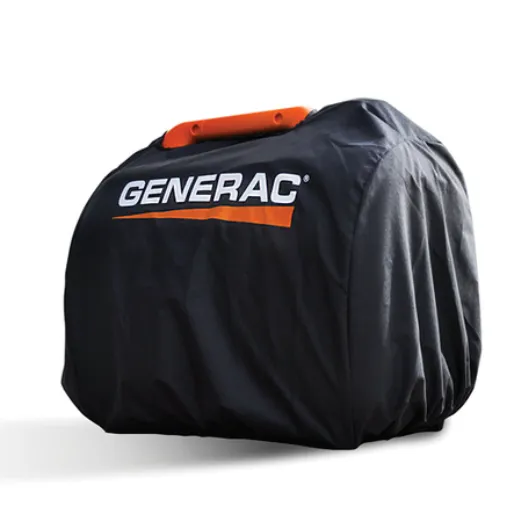
Material
Ensure covers are manufactured from first-grade weather-resistant materials, such as heavy-duty vinyl or polyester, which offer protection against rain, snow, and UV-related damage, making them timely and suitable for generator tarnishing.
Fit and Compatibility
Choose a cover that fits your Generac model to ensure a safer enclosure. Universal covers may not provide complete protection or proper ventilation.
Ventilation Features
Look for covers that are provided with vents to facilitate the drainage of internal moisture and condensation, which can damage internal components.
Ease of Use
Ensure the cover can be zipped or drawn, allowing for simple access to the generator without needing to obliterate it.
Durability
Examine whether the cover is highly tear-resistant and waterproof in rough environments, if applicable.
Factors to Consider: Sizing and Compatibility
While picking a generator cover, exact sizing and compatibility are paramount for paramount protection and functionality. After determining your generator’s length, width, and height, compare these measurements with the specifications furnished by the cover maker. Properly fitting covers provide minimum interference against ingress of water or dust and exposure to exterior elements. Large-sized covers allow debris or moisture seepage in, while excessively tight covers tear easily or fail to protect crucial components. Furthermore, check the compatibility of your generator model regarding any peculiar features such as handles, wheels, or mounted controls. Some are specially fit for particular classes of generators, such as portable or standby. Such covers may have custom openings or adjustable features to ensure a better fit. Check the product specifications to ensure the cover is suitable for your generator’s design and operational requirements.
Material Quality and Durability
When choosing generator covers, the material used to make the covers is crucial, as it will provide protection and durability to the device over several years. The high-quality covers are typically made of heavyweight polyester, vinyl, or canvas, which effectively resist environmental agents such as UV rays, moisture, and abrasion. Some treatments, along with a waterproofing coating, are featured on high-end covers to prevent water leakage from heavy downpours, consequently reducing corrosion. Additionally, some materials contain UV stabilizers to protect against fading and deterioration caused by prolonged sunlight. The quality of construction will affect durability; however, reinforced seams and double stitching work wonders to protect covers. For an area prone to extreme weather conditions, covers rated for high-temperature tolerance and wind-resistant standards can ensure reliability. The premium material will ensure that the generator cover continues to protect itself from wear and tear caused by environmental factors.
Specific Models: Generac 6811 5000 and More
Generac 6811 5000 is a strong and reliable model for protecting a wide range of portable generators. Generation heavy-duty vinyl and patented X-shaped handle opening provide a weather-resistant appearance and better fit. The cover fits all generators measuring up to 36 x 24 x 30 inches and accommodates a wide range of models with a 5000-8000-watt rating. This model also features an elasticized hem to secure the fit, especially during windy conditions.
Also worth mentioning, covers are available for Honda EU2000i, Champion 100302, and Westinghouse WGen3600 generators. These covers are designed from durable UV-resistant polyester fabric to withstand long hours of solar exposure and humidity levels. For instance, the cover for the Honda EU2000i features a water-repellent coating and a precisely engineered venting system designed to reduce condensation buildup during periods of storage. Therefore, these details enable the user to match the generators with covers that best conform to the equipment’s size and operating requirements for sustained performance and protection.
Maintenance Tips for Your Generator Cover
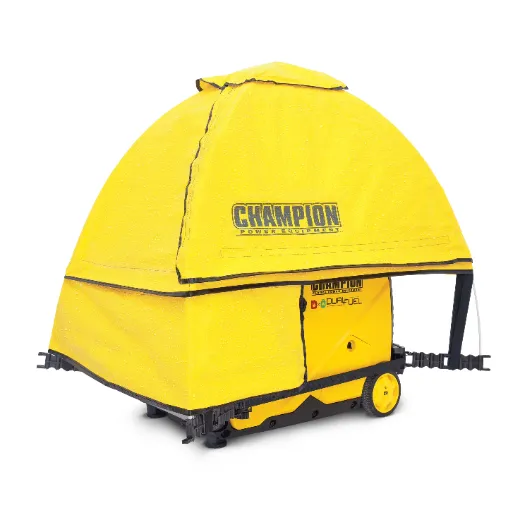
- Regular Cleaning: Proceed to wash the cover with mild soap and water unless it is dirty, contaminated by debris, or bearing mass environmental deposits. Inappropriate cleaners are bonded to destroy the protective coatings of the fabric.
- Inspect for Damage: Look for signs of damage, such as covering, tearing, loose seams, or wear after heavy use or prolonged exposure to harsh conditions. Either repair or replace your worn covers immediately to ensure they provide effective protection.
- Proper Storage: Store the cover in a cool, dry place when not in use. This will prevent the aging of the materials and the development of fungi in the cover.
- Avoid Harsh Chemicals: Refrain from smoking, using bleach, or solvents, as these can cause damage to the hydrophobic properties and reduce the durability of the cover’s cloth.
- Secure Fit: Ensure the cover is securely fastened to the generator; otherwise, it could be blown off in the face of strong winds or during heavy rainfall.
Regular Cleaning Procedures
- Remove Loose Debris: Gently shake or brush off dirt, leaves, and any other loose particles from the surface of the cover. A soft-bristle brush is recommended to avoid damaging the material.
- Wash with Mild Soap: Prepare a washing solution with lukewarm water and a mild, non-abrasive detergent. Then, take a soft sponge or cloth and gently rub the covers. This should remove the stains or dirt; however, apply carefully so as not to wear out the waterproof coating of the cover with aggressive scrubbing.
- Rinse Thoroughly: Ensure that all soap residues are completely rinsed off with clear water. The presence of soap residue directly affects the material by suppressing the protective properties over time.
- Air Dry Completely: Allow the cover to dry completely in a well-ventilated environment. Heat drying, such as from clothes dryers or radiators, will warp or damage the fabric.
- Inspect for Damage: During the cleaning process, check for any signs of damage or wear and tear, as well as any minute imperfections. These can be treated using repair kits or, if necessary, other methods.
Inspecting for Wear and Tear
Focusing on those with maximum stress lying upon them and exposure to environmental factors is necessary when checking for wear and tear. Common sites of such factors include seams, zippers, and areas with high friction. Next, look through the stitching carefully. Any threads pulling loose or linings getting gaps will be weaker structurally than before. Of special attention are the zippers, which must operate smoothly without any snags; lubricate them if necessary. Next, look for signs of discoloration, thinning, or loss of waterproofing in the fabric-that would be indicators of exposure damage from UV rays or excessive moisture contact. Research-based insights have demonstrated that preventive maintenance and timely detection of damage significantly increase the lifespan of protective materials, thereby reducing the need for premature replacements. Having a systemized inspection setup, preferably every quarter, would assure their best performance and serviceability with time.
Maximizing the Lifespan of Your Cover
Cleansing rightly shall enhance the longevity of your cover. Studies show how dirt, debris, or organic matter can cause abrasions or micro-tearing to the material. Clean with mild non-abrasive detergents specifically made for the material used in making the cover. The use of harsh chemicals like bleach, ammonia, or solvents may eventually wear away the protective coating, thus weakening the net strength of the fibers and ultimately rendering the cover ineffective. Upon further consideration, one may conclude that using a soft-bristled brush or sponge to prevent scraping or injury while cleaning would be the most suitable option. Then, ensure the cover is completely dry before storing it, to avoid mold or mildew from growing, which is more likely to occur in high-humidity environments. The more one adheres to these best practices, the more one can ensure good longevity for the cover’s effectiveness and utility.
Benefits of Investing in a High-Quality Generator Cover
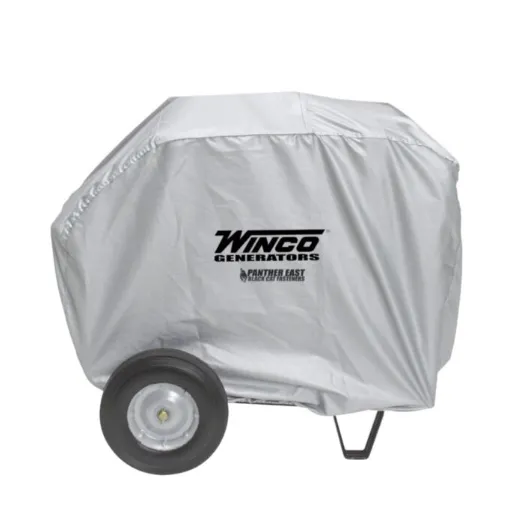
- Protection Against Environmental Damage: A good generator cover would prevent the elements of nature, such as rain, snow, dust, and sunlight, from damaging the generator and thereby preventing its premature wear and corrosion.
- Extended Lifespan: Protecting generator parts from water and dust keeps the generator in working condition; a good cover tends to reduce the need for repair or replacement.
- Improved Efficiency: Keep the generator clean and free from contaminants so that it functions smoothly when needed.
- Cost Savings: The cost incurred in regular maintenance is reduced when a super durable cover is utilized for generator protection.
- Enhanced Safety: A clean generator minimizes the risk of electrical hazards due to dirt and contamination, which can cause overheating.
Extending the Lifespan of Your Generator
To ensure the maximum working life of your Generator, periodic maintenance coupled with the observance of best practices becomes pertinent. A consistent inspection of fuel lines, filter states, and sparks can prevent significant damage by addressing minor problems at their onset. Adequate oil changes, as recommended by the manufacturer’s guide, should be performed within the specified time frame to ensure the internal parts of the generator are well lubricated, thereby reducing wear and tear.
The generator should also be stored in a clean, well-ventilated, and dry place to reduce the incidence of corrosion or damage caused by moisture. A load test must be conducted regularly to determine the standby generator’s capability to handle its nominal power rating, ensuring its long-term good performance.
Other things that need to be checked to ensure generator upkeep include fuel quality. Badly contaminated fuel can cause blockage and reduce efficiency, while degraded fuel can permanently harm your engine. Use fuel stabilizers and rotate the reserves periodically to prevent such problems.
Reducing Repair Costs
Performing routine maintenance and taking proactive measures are equally crucial for lowering your repair costs. It would be wise to implement a predictive maintenance schedule that infers the health of your generator in real-time, using sensors and performance data, thus warning you of potential incidents before they escalate into costly fixes. Another measure to reduce excessive repair costs is to follow through on scheduled services, such as changing oil and filters for all affected components. Higher-quality replacement parts and proper storage solutions also contribute to the longevity of the machine, consequently decreasing the rate and cost of repair. Combining these steps will assure fewer downtimes and better operational efficiency.
Protecting Your Investment
Advanced maintenance techniques and modern technological tools must be implemented to safeguard the investment further. Prediction systems that utilize sensors and real-time data analysis identify potential failures before they occur, thereby providing opportunities to act proactively rather than reactively. Another method to diagnosing and recording maintenance schedules and repair histories keep no valuable services overlooked, giving insight into long-term trends. Taken together with expert recommendations and advanced diagnostic tools, these solutions enabled increased operational time, reduced operating costs, and extended equipment life.
Reference Sources
-
- Summary: This research analyzed the role of private markets in electricity resilience through backup generator sales, including Generac products. It found that increasing consumer demand for backup generators is driven by perceived risks and intolerance to power outages.
-
University of Southern Mississippi Generator Procurement Specifications
- Summary: This document outlines the procurement specifications for Generac and Taylor generators for emergency power at the University of Southern Mississippi. It emphasizes the technical and operational requirements for generators, including acoustic enclosures, fuel systems, and compliance with safety standards.
Frequently Asked Questions (FAQs)
Q: How do I choose a waterproof generator cover for my portable generator?
A: Buying a waterproof cover for a generator is more about the size and power consumption of your generator. Additionally, the cover must be tailored to the exact generator model you have, whether it’s a Generac portable or any other type. For better protection against rain and other harsh weather, a high-quality waterproof cover is the best option. Opt for thermal covers that are for 5000-10000 watts and are labeled waterproof and heavy-duty. Lastly, it should be able to cover the generator effectively to prevent it from damage caused by harsh weather conditions, thus protecting it from such harm.
Q: Are there any reliable generator covers for home standby generators?
A: Speaking about home standby generators, it is definitely possible to find several highly recommended and available generator covers. These covers can be of a three-dimensional design that clings tightly to the generator, protecting it from water, accumulated dust particles, and UV radiation. It makes sense to pay extra attention to the material thickness and impregnation when looking for a number of accessories and attachments. Also, ensure that these specifications include or are attached to a generator that has at least one means for fumes/toxins to escape, in case of overheating. As long as one protects the generator during storage, although most domestic generators come in designs resilient to harsh conditions, the covering will intentionally take that spirit.
Q: Can I use a cover for most portable generators?
A: There are indeed many covers out there for portable generators that can claim to be universal, but it always helps to check the dimensions before you buy. Recommended are the ones listed as heavy-duty or waterproof universal generator covers. They keep your generator dry from rain and snow, but also protect against UV damage that will wash out the paint job. Some cover designs are intended for generators between 5,000 and 10,000 watts, serving a dual function across different models.
Q: What is the benefit of using a generator enclosure?
A: There are many advantages to enclosing a generator, such as an increase in protection from weather and even additional makeshift theft-proofing within an area. It is possible to create enclosures from high-duty, tough materials to protect the genset against the harmful aspects of the weather. This aspect is crucial for outdoor gensets that have been installed on the ground. Besides weather resistance, an overall enclosure can also be beneficial during operation, as it helps mitigate overall noise levels in the premises. A generator enclosure is a valuable purchase for many individuals who rely on a secondary power source.




